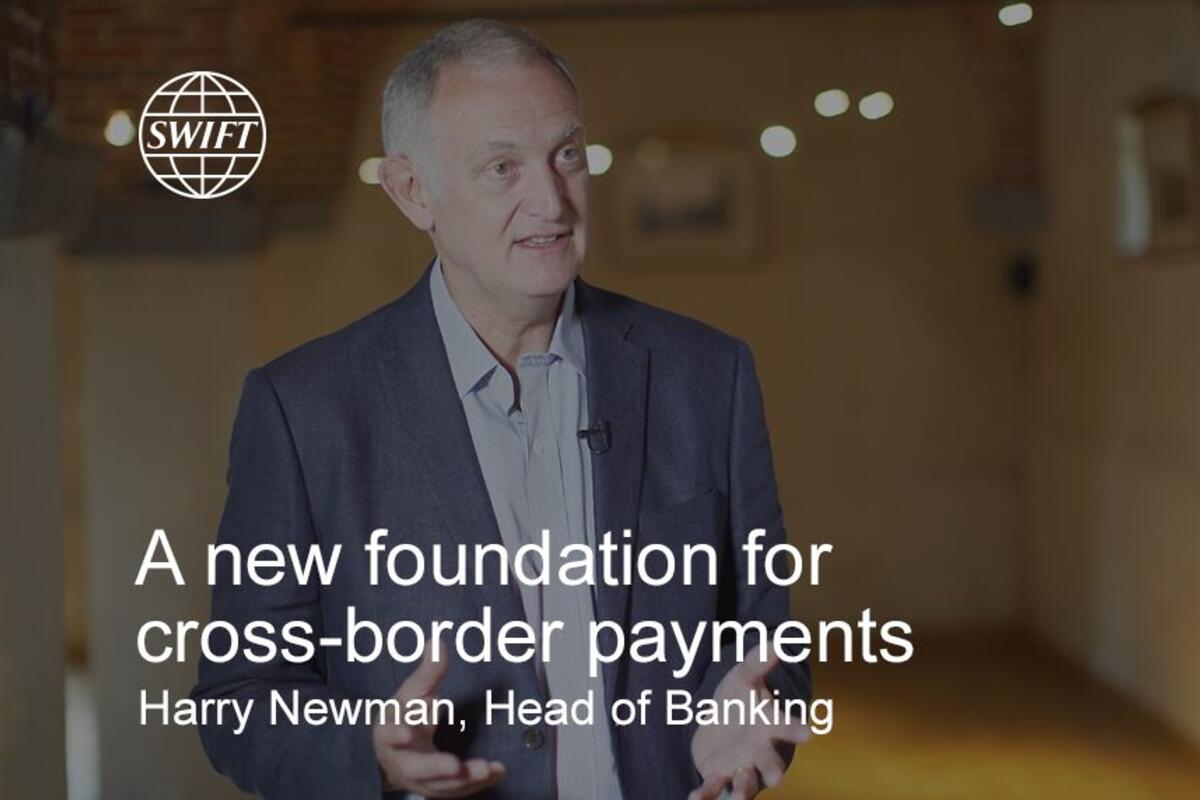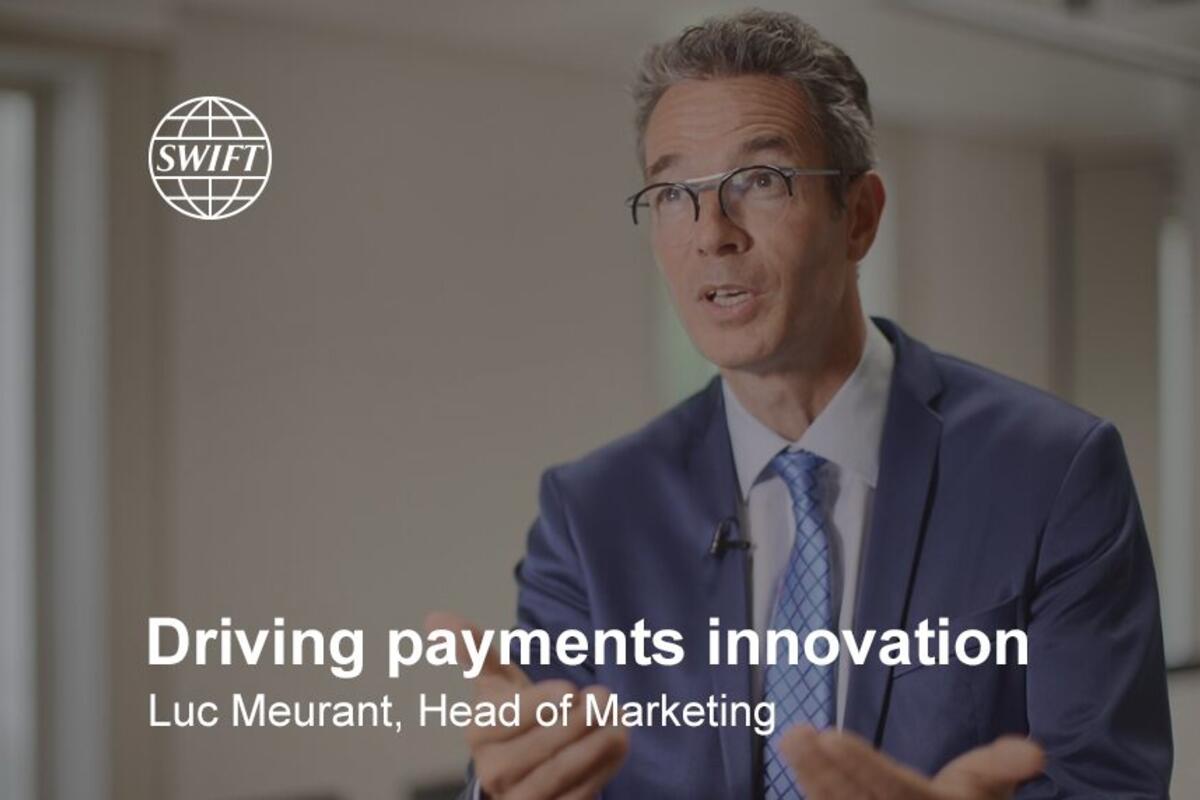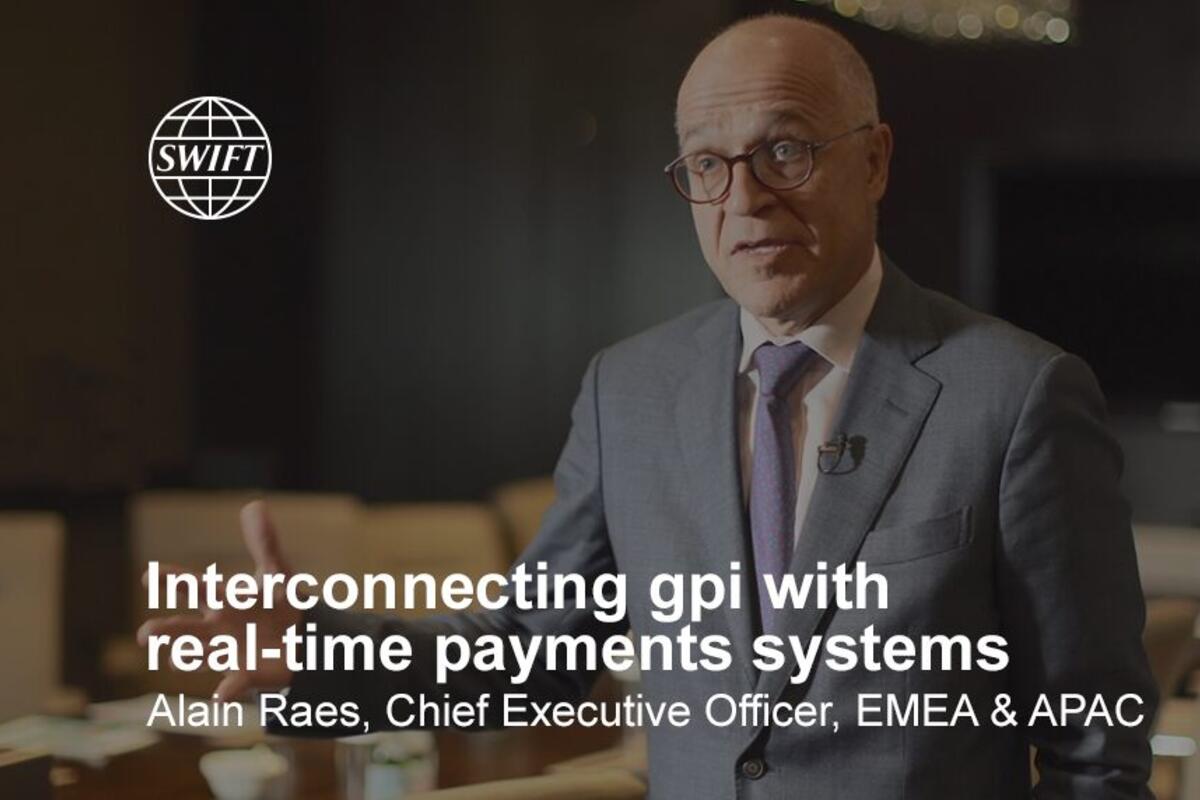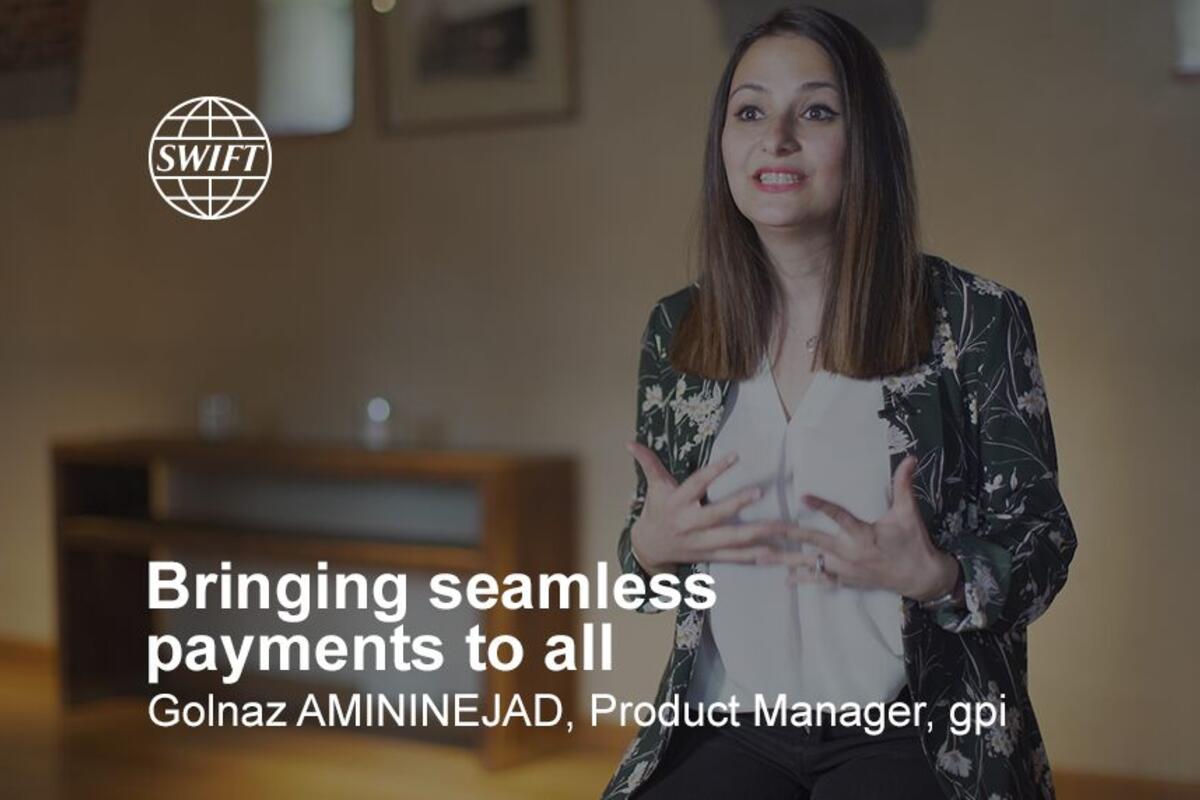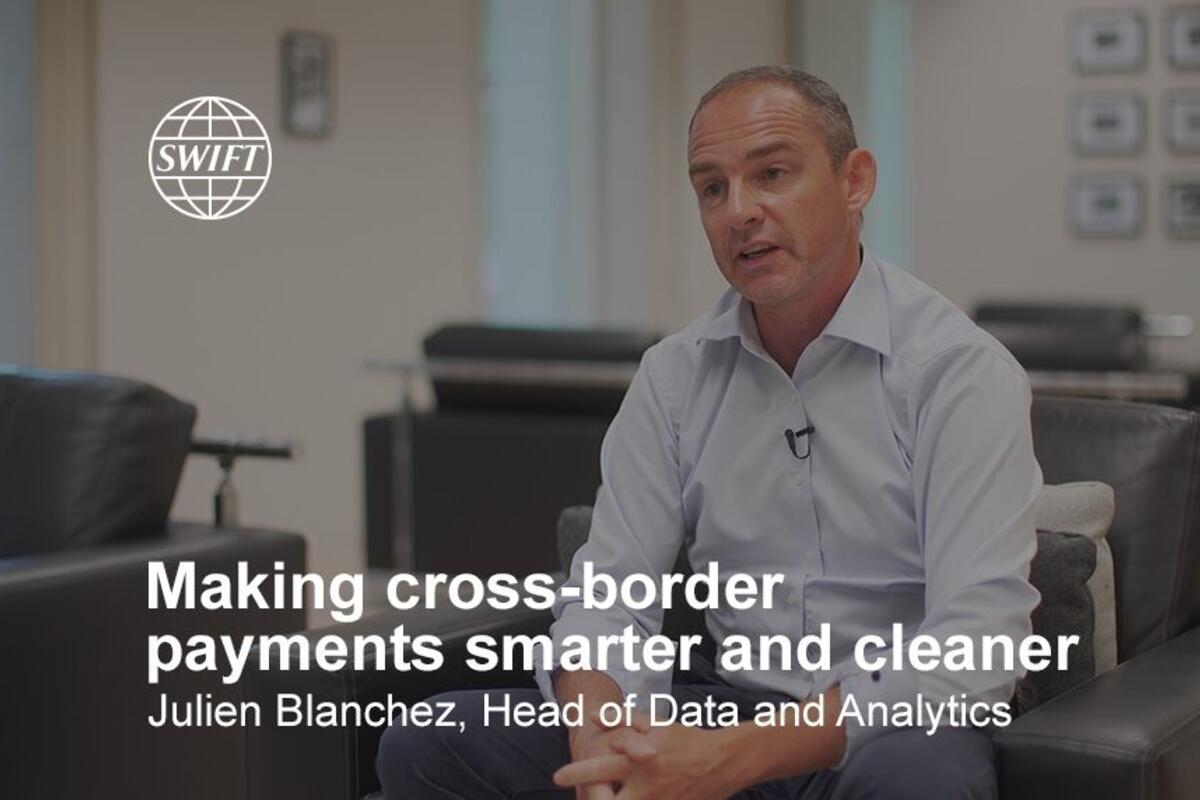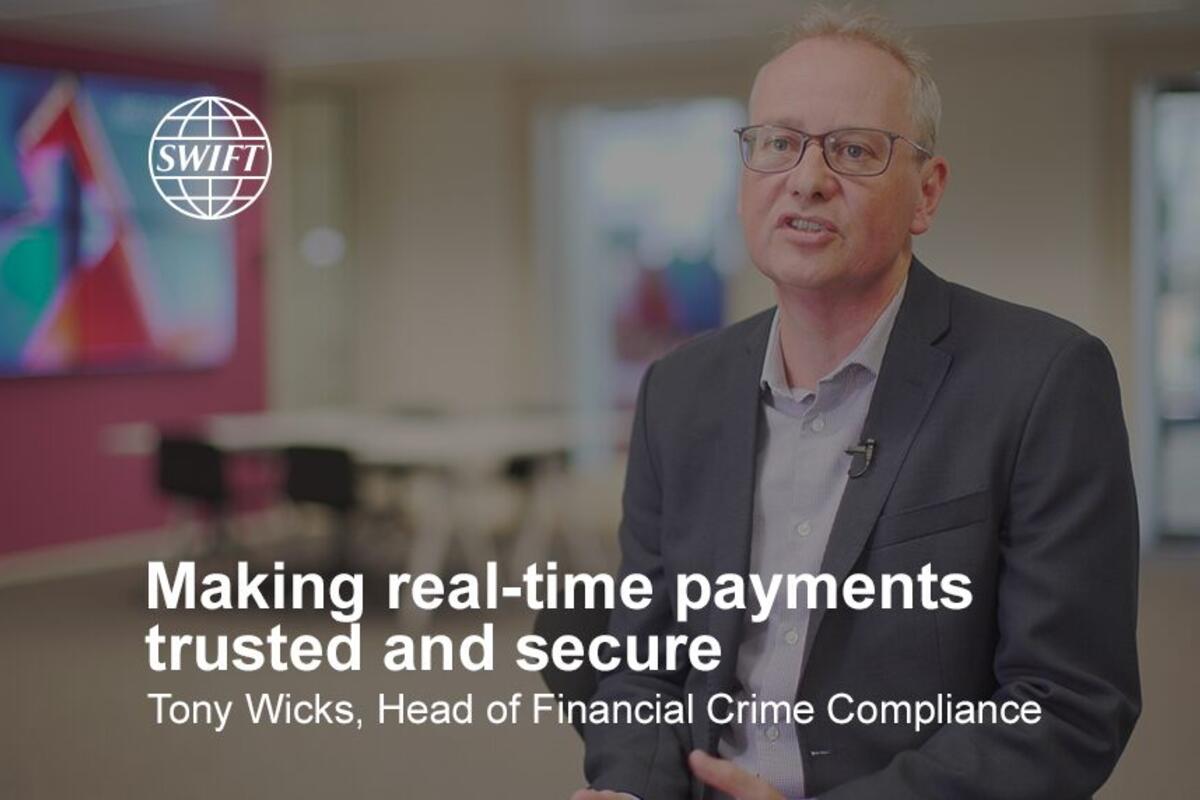Table of contents
Executive Summary
Innovations in domestic retail payments have multiplied at a gravity-defying pace in recent years, driving unimaginable improvements. Entire domestic markets have completely transformed the way they shift value.
Facilitating the exchange of value beyond tightly knit domestic, single-currency communities is inherently more complex for banks. Despite this, the world of wholesale cross-border payments has advanced rapidly alongside its domestic kin – at times prospering from domestic progress, at times fostering it.
Below we describe our vision for cross-border payments: to make cross-border payments as seamless and convenient as domestic ones: instant, accessible, ubiquitous.
Importantly, we don’t think that cross-border payments challenges should be solved for with closed loop systems. Doing so would easily solve for a subset – or multiple subsets – of participants, but value needs to move everywhere – from every account, to every account. Loops create barriers and friction; they reduce fungibility and portability, they limit competition and they fragment liquidity.
With goods and services moving more quickly and across greater distances than ever before, value needs to shift further, faster. Value transfers must be friction-free. Bank account to bank account. They must also be safe, secure and compliant. While banks sit at the centre of this, the core architecture is key. It must be open and trusted, innovative and resilient; its reach must be ubiquitous and its operations robust. It must enable smart, embedded, instant payments, 24/7 from every account to every account, everywhere. It must support banks in this journey.
This future is within reach. The elements are already in place, the technology is available, and the Swift community is progressing towards it.
Key players have the ambition and commitment to realise this goal. A coalition of the willing is forging ahead with change, making the future a reality sooner than might be expected.
The remainder of this paper substantiates our bold claim. It lays out the key elements and dynamics that lead to this ambition.
Cooperation by all players in the community is important, because the openness and universality of the envisioned system are unique; the more widely adopted the convention for moving value, the easier the circulation of value – and the more the convention will be used. Banks are key in this. Those that can move faster, will be able to move faster; subsets of participants may want to forge ahead with projects and will be enabled to do so, but everyone will have to progress in payments.
Revolutionising both incrementally and radically we will enable the movement of value ‘from any account to any account, anywhere in the world’ with the same immediacy and convenience as domestic payments.
Maximising convenience and doubling down on ubiquity, we’re engineering a payments revolution.
Introduction
Providing payments services is a privilege that banks have held for a long time, but one they have to earn every day. In many ways, it’s an ungrateful privilege – it requires huge proprietary investments, but it relies on and reaps collective rewards. Failing to keep up with changing demands can very quickly erode market share.
Payments mechanisms and conventions can change rapidly. In just eight years between 2010 and 2018, the usage of cash in low value retail transactions in Sweden, for instance, dropped from 59% to 20% (Risbank, 2018). For customers that was just a change in preference and custom. For merchants and retailers that necessitated change and investment. But for banks it required the most change and investment of all – the eradication (or, worse, maintenance) of redundant ATMs; investment in card issuance; new connectivity partners; new security technologies and anti-fraud mechanisms, and more besides.
Adapting to changing customer needs and payment conventions is key to survival in the payments business. A bank that refuses to issue cards or offer online banking in the UK, or ceases to issue cash in Germany, will soon be out of the payments business. That is today. Tomorrow the habits and preferences of British and German consumers and retailers may be vastly different.
As domestic habits and demands change, as real-time domestic payments systems are rolled out, and as local Real-Time Gross Settlement (RTGS) systems move to 24/7 settlement, banks know they cannot stand still. They need to adapt their own systems to support them – it’s do or die in payments.
The cross-border payments landscape is no different.
Cross-border payments are inherently more challenging than domestic ones, precisely because they involve bridging the “closed loops” of multiple currency systems. Adding to the complexities presented by the world’s 180 currencies and many more regulatory jurisdictions by introducing new “value loops” will slow down the movement of value, not speed it up – at precisely the time when technology affords progress, and economics demands it. With goods and services moving more quickly and across greater distances than ever before, value needs to shift further, faster. From account to account, in an instant.
Only a seamless and open global value transfer system can enable that.
Payments: Looking to the future
Instant, accessible, ubiquitous
1 – A new core infrastructure
When customers make payments, they are unlocking the value they have stored in their pockets, wallets or accounts. Key to their ability to unlock that value is the third-party acceptance of both the “value” they are transferring, and the means by which they want to transfer it.
The utility of any payment convention thus depends first and foremost on the depth and breadth of its adoption in its intended universe. Beyond reach, a modern payments convention needs more; it needs supporting mechanisms that are efficient, accessible, interoperable; safe, reliable and fast.
In most modern domestic markets only one form of money is generally accepted – the domestic currency; but that single currency is transferrable by a variety of means. This ensures, or at least should ensure, that unlocking and transferring value within a domestic market or currency zone is easy. Ubiquity is ensured both by the facility of the means of payment and the acceptance of the currency.
In cross-border payments, the 180 currencies involved make matters more complex – but not impossible. Value stored in one currency can be exchanged for value in another – or in some cases, through triangulated exchanges, to a third. The cross-border payment system bridges the closed loops of the individual currency zones.
The intended universe of cross-border payments is, by definition, global. Thus, the challenge in establishing and maintaining the utility and efficacy of a cross-border payments “system” is that much greater than it might be in a unified domestic market.
If these challenges were first overcome in a systematic form when Swift went live in 1977, iterative and incremental improvements have continued ever since. The network’s reach has expanded and its technologies have been updated; standards have evolved; accessibility has been extended; and we’ve made continuous investments in redundancy, reliability and security.
Iterative updates and ongoing investments will always be needed, but what is taking place today is a complete reinvention.
Using technology to facilitate that transformational change and harnessing the commitment of the 11,000 strong member community, Swift is engineering a next-gen cross-border payments experience – an experience so fast and seamless it will be no different to its domestic equivalent.
We’re revolutionising cross-border payments.
2 – Instant
gpi is the new standard.
The advent of real-time domestic payments and 24/7 central bank settlement heralded a new dawn for cross-border payments, enabling the industry to reconceptualise cross-border payments. In 2017 Swift and its community moved fast to deliver on this, introducing the ‘global payments innovation’, or gpi, a new convention based on new technologies.
Just two years since launch, gpi is widely embraced by the community and fast-proving to be the catalyst for unprecedented change in cross-border payments.
Swift and its community created gpi setting three key foundation stones. Firstly, the introduction of a humble tag – a unique transaction identifier which accompanies every payment throughout its trajectory. The existence of this 36-character marker (The Unique End-to-End Transaction Reference, UETR) allows payments to be traced as they go from originating senders, through correspondents, to ultimate beneficiary accounts. Secondly, the introduction of a tracker which follows these payments along their trajectory and reports back on their status, on demand. Thirdly, the establishment of a new cross-border convention under which banks commit to process payments from ordering customer right through to end beneficiary within tight timeframes – timeframes that are made visible to their respondents and correspondents, thanks to the tracking capability.
More than 55% of Swift cross-border payments are already being made via gpi, moving more than 40 trillion US dollars’ worth of payments across borders faster than ever before. Half of them are reaching end beneficiary customers within minutes, and practically all within 24 hours.
Within two years, every cross-border payment will be a gpi payment.
The velocity at which gpi payment transactions can be effected will speed up further as more and more banks move away from batch to real-time processing. Because customers are demanding ever-faster payments and more and more markets are moving to real-time, banks will have no choice but to start processing their payments this way.
Because customers are demanding ever-faster payments and more and more markets are moving to real-time, banks will have no choice but to start processing their payments this way.
With gpi already past the tipping point, the urgency of moving to real-time will accelerate, even in those markets where there is no domestic imperative to do so. This is because the tracker enhances transparency, giving banks insight into how fast their correspondents process transactions. Banks, driven by their own customers, will either pressure them to speed up, or move their business to correspondents with faster engines.
In the meantime, we will continue both to ease banks’ journey to this future, and to ‘tighten’ the timing limits for processing gpi payment transactions, so that in the not-so-distant future all transactions will clear in seconds – effectively in real-time.
3 – Twenty-four / seven
And not just real-time, but round the clock.
The roll-out of real-time domestic payments is driving banks to extend interbank processing hours; no longer limited to office hours, 24/7 processing is fast becoming the norm.
In some instances this is because real-time domestic systems have started to enable domestic money transfers on a 24/7 basis. In others, banks having to upgrade their systems to enable real-time processing have simultaneously elected to take the next step and incorporate 24/7 processing capabilities.
Behind all this, an ever growing number of central banks have done the same with their RTGS systems. More will surely do the same, not least following the European Central Bank’s introduction of the ambitious Target Instant Payment Service (TIPS).
In operation since November 2018, TIPS enables central bank settlement in Euros 24/7, right across 24 countries within the European Union.
The domestic systems’ moves to 24/7 processing are key facilitators in the move to real-time round-the-clock cross-border payments, because the systems play a crucial role in carrying the domestic legs of transactions and in ensuring full settlement finality.
Swift proudly supports many of these systems 24/7, more in the future.
4 – Ubiquitous
Unlocking value, from every account to every account.
Maintaining the openness of the cross-border payments system is fundamental to ensuring efficient flows to everyone, everywhere. It is key to unlocking value across-borders, which itself is key to trade and commerce, economic productivity and growth.
There are captive, “closed loop” alternatives to both domestic and cross-border value transfers. Indeed you can load and transfer value very efficiently within ‘captive’ tokenised money – stamps, or store and gift cards and proprietary e-wallet systems – even (in some cases) across borders – but mostly this tokenised value is useful only in its own universe. Taking the value out of those tokenised systems is rarely simple, often costly, and sometimes impossible.
Solving for the challenges presented by cross-border payments with closed loops might solve for a subset – or multiple subsets – of participants, but value needs to move everywhere, and to do that it needs to be freely realisable. Value needs to be accepted, trusted and exchangeable, and it needs to move from every account to account, without friction, with speed – and with certainty.
With gpi, Swift and its community are enabling just that – radically upgrading the rails which enable trusted, fiat currencies to move – enhancing liquidity, accessibility, transparency and speed.
Uptake of gpi already passed the tipping point at the two-year mark with well over 50% of payments in 148 currencies travelling this way between over 200 countries and along more than 1,100 country corridors.
By 2020, gpi will be the norm, right across the thousands of banks connected to the network, enabling smooth, safe, secure and friction-free value transfer. With full participation, all users – that’s 11,000 users across more than 200 jurisdictions, and all their end customers – will benefit from the scale, reach and sophistication of the revolutionised cross-border payments system.
gpi will be universally useful and ubiquitous.
5 – Plural
An improved experience – for everyone.
Bank to bank payments are critical for the smooth operation of the financial system – but it is the payments between financial market infrastructures and financial institutions that keep markets operating, and the payments between corporates and consumers that keep economies running.
Our ambition is to improve ease and experience – for all.
For securities players – broker dealers, custodians, financial market infrastructures and asset managers – certainty and speed of payment, coupled with the elimination of hold-ups, can help improve funding, eradicate settlement fails, fines and missed investment opportunities. Better payments can improve investment possibilities, streamline treasury processes and enhance returns.
For foreign exchange players, speed, transparency and predictability are also key. Apart from avoiding settlement delays and failure, they also enable treasury operations to improve returns on capital – allowing them to optimise short-term funding.
For those engaged in the trade area, our ambition is to help speed up the trade finance process by removing friction, thereby freeing up funds, improving trade flows, releasing much-needed working capital and much more besides.
And for other corporates and their clients, our vision is to ensure instant, transparent, ubiquitous, secure payments – account-to-account, anywhere, at any time.

6 – Smart
We’re also making payments smarter.
The majority of cross-border payments require no manual intervention and are fit for Straight-Through Processing (STP), but the minority cause headaches for customers and costs for banks. Our aim is to eliminate them.
When information is missing or incorrect, STP ends and problems begin. Hits from sanctions filters are another problem and while some can be quickly diagnosed as false positives, the balance requires additional information. In both cases, receiving banks have to go back up the payments chain – often as far as the initiating banks, who in turn have to ask their end customers for whatever elements are wrong or missing. With those enquiries taking place across time zones, misspelt names can quickly result in higher costs, missed shipments, idle factories and empty shop floors.
Developments are underway to address these causes and drive non-STP to zero.
Firstly, the gpi Tracker enables banks to identify the underlying causes, take action to quickly remedy them with banks up the chain and reduce, if not eliminate, them.
Secondly, increased and better use of data, along with Artificial Intelligence (AI) and Machine Learning (ML) tools, are already improving screening algorithms and reducing the number of false positives. As better data and better AI becomes available, manual intervention will reduce even further.
Thirdly, and perhaps most importantly, the industry needs to rid itself of the bugbear of missing or incorrect data. Swift is leading on this with a range of message validation tools.
First up are integrated pre-validation and case resolution functions. The first of these allows the initial bank in the chain to check data – for instance, whether the details of the receiving customer (name, address, account number) are complete and correct – before initiating payment instructions, while the second enables quick and interactive resolution of operational, compliance and regulatory related issues, smoothing and speeding up the payments process.
The industry needs to rid itself of the bugbear of missing or incorrect data. Swift is leading on this with a range of message validation tools.
Next up, we aim to shift the industry to “check once”. We will explore how to enable sending banks to check ex-ante whether they are completing messages with the specific information that all the individual banks along the payment chain will need for their screening purposes; at the same time we’ll look into developing an interactive problem resolution mechanism. Alongside that, we’ll expand the toolset further to enable upfront transparency on fees and schedules so that both originators and beneficiaries will have full predictability on costs and availability of funds.
And that’s not all. If on delivering those plans we identify more bottlenecks, or further ways to improve the service, we’ll address those too.
7 – Clean
Not just smarter, but cleaner.
Compliance challenges are rising along with the regulatory exigencies – and the penalties. Our aim is to ensure the correspondent banking industry continues to have the tightest controls and most efficient tools at its disposal to detect and prevent illicit and illegal use of the financial system.
No need to build anything from scratch – we will continue to enable banks’ compliance by building out our financial crime compliance tools and by enhancing participants’ abilities to know their customers, to screen their transactions and to detect AML abuses.
We will also continue to work to ease the burden by expanding our reporting and data analytics services, helping financial institutions comply with international requirements, thereby enabling a smoother payments experience.
If, in particular, smaller banks and more occasional participants in the cross-border business will be able to use our tools to protect against de-risking, the instant payments landscape we envision requires a new paradigm. As we move forward, we won’t be shy to address this: we will work with the industry to understand how we can leverage data, embed identification schemes into payment flows and redefine and reinvent processes.
Our aim: to reduce duplication and discover new efficiencies, without compromising on banks’ compliance.
Learn more about our compliance solutions
8 – Connected
A hyper-connected future.
If banks are the bridges that enable cross-border payments, local payments infrastructures provide the domestic roads. As banks adopt gpi and more domestic roadways move to real-time, so instant cross-border payments become a reality.
In Asia we’ve already successfully tested this with banks enabling instant payments across geographies, through domestic real-time infrastructures in four markets to the ultimate beneficiary banks and accounts. Now we’re doing the same in Europe and aim to go industrial, rolling out a framework to enable the same across the world.
Adopting global market practices, common standards and reference data are all key to making the interface to a domestic market seamless – but they are not all. To truly enable a future that’s always on, always connected, always instant, those infrastructure operators that haven’t yet done so will need to move their local ecosystems to real-time – and work with their regulators to remove any other barriers that prevent it to make their “interfaces” to the wider world as accessible as possible.
Looking further into the future, we could then even envision enabling multiple domestic real-time systems to offer ‘addressing to mobile or email’ payments seamlessly via Swift across borders. In that exciting future, a bank’s end-customers in one geography would be able to send payments to another bank’s end-customers in another, without even knowing their bank account number. While sending a Swift payment to an email address or mobile number abroad should be made possible by a simple API call to an addressing database in the host country, behind the scenes banks will be able to check information for compliance purposes quickly and efficiently.
Seamless, simple, smooth – and safe.

9 – Structured
A shared language supporting a common purpose.
To facilitate this growth and ambition we are resolutely open: a trusted network, with transparent membership rules and strict security – and shared, open standards.
Modern, open, globally adopted standards are key to our ambition of realising our objective of making cross-border payments as immediate and convenient as domestic ones. This is why we are simultaneously managing a transition to the open ISO 20022 standard. Coinciding with the ISO 20022 adoption plans of High Value Payment Systems in the Eurozone, the US and the UK, the move in November 2021 will support deeper integration both across and within borders. The significance of the move to ISO 20022 cannot be overestimated.
It will enable banks to channel instant payments across borders and right through domestic systems, direct to end beneficiaries’ accounts. It will allow smaller markets to internationalise faster and reach wider. And it will allow larger markets to enable fluid movements across the full currency “stack” within their markets – between banks and other payment providers, card schemes, RTGS and local clearing houses. It will enhance competition, drive innovation and reduce friction; it will benefit endcustomers in terms of speed, ubiquity and choice; and it will deliver huge benefits to the industry in terms of Total Cost of Ownership reduction, ease of integration and efficient business processes.
On top of all this, the migration will future-proof the industry by easing the adoption and integration of new technologies as they emerge. And we’ll be sure to ease migration by offering translation services to map existing formats to the new standard.
Read also: Joining forces to support the ISO 20022 migration
10 – Open
Fuelling the payments revolution.
Our open approach enables a vibrant ecosystem in which banks can differentiate themselves by layering services and products to distinguish their offerings; in which fintechs and other players can create and offer value-added services; and in which innovation is fuelled.
We are investing massively in API technology to support this open architecture, making our services available through APIs, enhancing flexibility and extending connectivity.
We are investing massively in API technology to support this open architecture, making our services available through APIs, enhancing flexibility and extending connectivity. And crucially we’re doing this without compromising on security. Our API platform, for example, exposes APIs over the same secure private IP network that protects Swift’s messaging services. While open, access to the network is carefully controlled, network users are subject to strict endpoint security requirements and are identified using verified digital ID.
If API technologies support more agile architectures for the systems that execute the business of finance and make it easier for new entrants to join, a successful transition to an API-based financial system is only possible if standards bodies converge towards a shared methodology for standardisation.
Harmonisation of API standards is crucial to fulfilling the potential for innovation in financial services. Industry standard API specifications must be maintained and governed which is why Swift is simultaneously delivering an industry tooling platform for the development, maintenance, publication and testing of common API specifications. Building on ISO 20022 to ensure end-to-end consistency in business processes, Swift aims to deliver an API platform for the future of finance, and the transition to an API economy.
11 – Embedded
Cross border transfers rely on a complex array of interconnected relationship networks, underpinned by global conventions and reliable, secure connectivity.
Thanks to the combination of a shared purpose, a common language and cloud and API technology, that virtual connectivity is quietly growing. As we extend and embed payments further up and deeper into commerce, into third-party trade, e-commerce and securities platforms, connectivity will now extend exponentially to provide an even smoother payments experience.
The potential applications are transformative; the new payments experience will be unrecognisable.
Banks and corporates, or specialised platforms acting on their behalf, will soon be able to initiate Swift cross-border payments through simple API calls right at the point of trade. Pending the success of a proof of concept with the R3 trade platform, we’ll also soon be enabling gpi payments on DLT-based trade platforms. Resolving the payment challenges DLT platforms face, we will enable gpi payments to be initiated within trade workflows, automatically passing them on to the banking system.
Similarly, supporting securities settlement by embedding 24/7 real-time payments capabilities accompanied by rich remittance information direct into execution platforms could deliver huge savings in reconciliations and allow for far faster movement of (cash) collateral.
There is no limit to the possibilities.
12 – Innovative
Open to new technologies, we are not going to use them to perform circus tricks.
While keeping at the cutting edge through internal R&D, we innovate and use technology for a real purpose: to improve solutions and resolve industry problems.
We are transforming an existing system to offer unprecedented convenience while retaining universality and safety. This means using tested and future-proof technologies to make the journey is as easy as possible for customers all around the world.
Every time we move forward, we make sure to equip our community with the tools they need to embrace innovation cost efficiently. And we will continue to take care to ensure that technology plays its proper role – facilitating not disrupting. In our world, technology is an enabler, not the driver of our future or roadmap. APIs afford easy connectivity and interchange, so we incorporate them; cloud computing enables many banks to make the journey while limiting the investment, so we deploy it; virtualisation and containerisation allow for better resiliency and smoother deployments, so we use them.
And we won’t stand still; when newer and better technologies enable us to provide better solutions, we’ll develop and deploy them.
13 – Trusted
Earning trust, every instant.
For all that today’s economy means ever-higher payment volumes going through ever faster, the maxims ‘’safety first” and “trust is key” still stand. There is no point having a fast but unreliable payments system, or risking trust for innovation’s sake – or indeed of capturing a vast market share, only to find oneself the wrong side of regulation.
Getting it wrong in payments can bring down the house.
Correspondent banking has long dealt with these challenges and is better positioned to face similar ones in the future than any other system.
The cross-border payments construct needs to enable huge amounts of value to be shifted all around the world. Both the convention and the infrastructure need to be reliable, safe and secure.
Correspondent banking has long dealt with these challenges and is better positioned to face similar ones in the future than any other system.
The legal and supervisory frameworks that respectively underpin and oversee cross-border payments are robust and proven. Alongside much else, they ensure clarity and finality; they tell us who is liable and when; they determine when a payment is made; and they inform us as to whether we can rely on an infrastructure and when we can’t. All these are important questions it is easy to take for granted, but they’re essential, which is why in revolutionising payments we’ll take care to keep and to build on them.
Even as we continue to revolutionise payments, we will work hard to ensure participants continue to benefit from all the features that make global payments safe and resilient today – and more besides. Trust in the underlying infrastructure is key. The infrastructure that underpins all this is resilient, robust and proven. We will maintain our track record, continuing to operate round the clock, round the world to deliver value, safely.
Amidst this change, Swift’s relentless focus on its operational performance, security and resilience will remain steadfast.
14 – Secure
Protecting the end-points.
As payments move faster, fraudulent pay-outs can be made sooner. The industry will need to get better at protecting against fraud – most particularly by ensuring endpoint security. It will also need to get better at detecting fraud; at responding to and at recovering from cyber attacks.
Three years in, our Customer Security Programme is delivering results across the spectrum. Furthermore, customer security considerations are in-built into everything we are doing.
We know that cyber attacks will continue, and adversaries will get smarter. But together we will continue to up the ante for potential attackers – by sharing information, by raising control levels and by developing ever-more sophisticated tools and capabilities for customers.

Conclusion – We’ve delivered on the ambition; now let’s realise the vision
Together, we can bring the future closer.
Our view of the future is deceptively simple: to make real-time, 24/7 cross-border payments as seamless, convenient, cost-efficient and accessible as domestic payments. Cross border transfers from any account to any account, in an instant.
gpi is proven, and is fast becoming ubiquitous. By 2020 it will be. Between now and then we’ll continue to build on it, completing the first step in the payments revolution.
Once Swift and its community have made global payments as convenient as domestic transactions, the boundaries between wholesale and retail will blur; correspondent banking and its infrastructure will be as suited to e-Commerce, Person-to-Person and remittance business as it is to wholesale business. That’s our vision.
The foundations are laid. The building blocks are already constructing that new future. Key participants are working with us to move to deliver the future of payments.
We know this realisation is far from trivial. But maintaining the privilege of providing payments is something that has to be earnt, and while staying behind is being left behind, moving ahead is getting ahead.
It will require a tremendous effort from Swift, from market infrastructures and from banks, as well as from fintechs – which is why we aim to make it as seamless as possible for smaller participants, and as opportunity-rich as possible for those with bigger ambitions. We’re in this together, revolutionising an industry and a service to deliver value today and tomorrow.
Let’s do it together.


